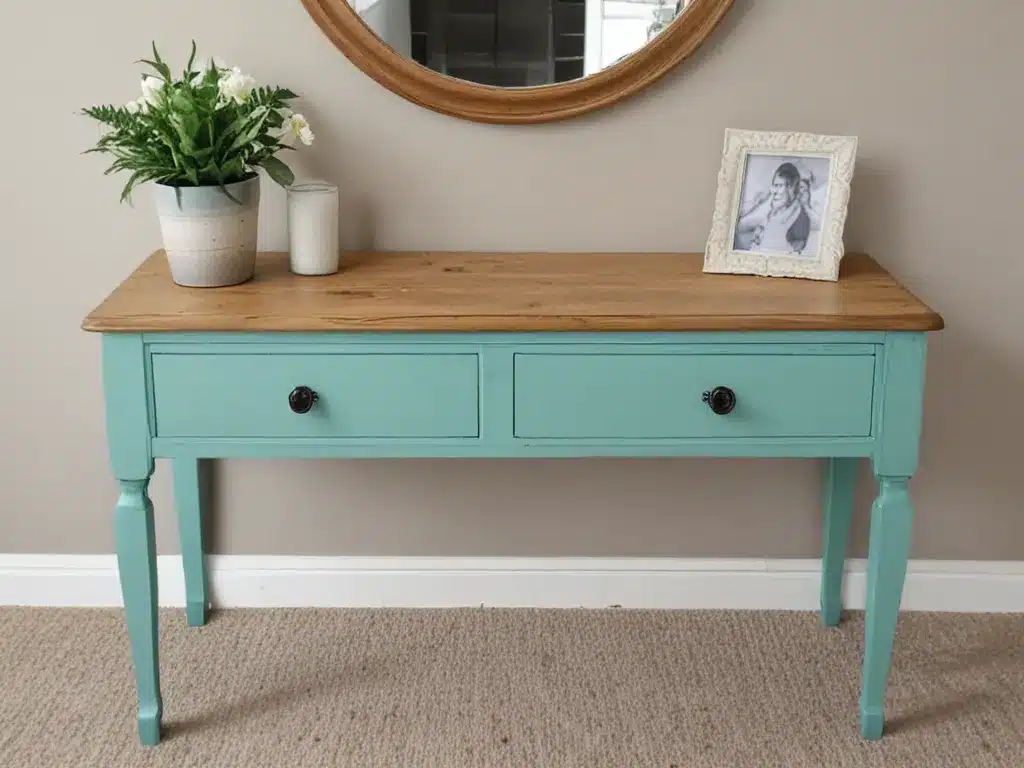Why Refreshing Furniture Matters
Giving worn and outdated furniture a makeover can breathe new life into a room. As styles and trends change over time, furniture can start to look tired or feel out of place. Refreshed furniture helps create a cohesive style and prevents constantly buying new pieces. It’s also an environmentally friendly option compared to throwing out and replacing furniture.
Refreshing furniture saves money compared to purchasing brand new items. Small updates like new paint, hardware, or fabric can make a dramatic difference at a fraction of replacement cost. It also allows you to hold on to cherished items with sentimental value.
How to Determine if a Piece is a Good Candidate for Refreshing
Not every piece is worth the effort of refreshing. Focus on solid wood furniture built to last, avoiding low-quality materials like particle board. Assess the current condition and determine if the frame and structure are still in good shape. Pieces with broken joints or missing pieces may not be fixable.
Consider the style and silhouette. More classic silhouettes tend to look relevant longer. Very dated styles like heavy ornate carving may be harder to refresh.
Determine if refreshing can fix the aspect you want to change, like dated fabric or worn finish. Some changes like seat depth may require more work.
Surface Refresh Techniques
Paint or stain – A fresh coat of paint or stain can often give furniture a brand new look. For paint, use a high-quality primer first for best adhesion. For stain, make sure to thoroughly remove old finish first.
New hardware – Replacing old hardware like knobs, pulls, and hinges can update the style. Ensure the new hardware fits the scale of the piece.
Upholstering – For fabric upholstered pieces, new fabric can entirely transform the look. Work with durable fabrics like cotton, linen, or microfiber for furniture. Use foam and batting to pad for comfort.
Refinishing – Removing old finish and reapplying new finish or wax restores wood furniture. Opt for food-safe finish for dining tables. Use paste wax for protective shine.
Distressing – Adding character with intentional paint cracks, sanding edges, or purposeful wear can vintage dated pieces. Work in layers for authenticity.
Restorative Refresh Techniques
For furniture that needs repairs, focus on restoration using these techniques:
-
Fix joints – Reinforce joints with wood glue, clamps, and new screws or nails if needed.
-
Replace or repair damaged pieces – It may be possible to replace a broken leg or side panel. Make repairs blend seamlessly.
-
Take care of scratches – Light scratches can be sanded and touched up. Deeper gouges may need wood filler.
-
Revive wood surface – Remove white rings or water stains by sanding and refinishing the damaged area. Use oil to rehydrate dried wood.
-
Clean upholstery – Deep clean fabric to brighten it up. Use gentle cleaners and protectants made for upholstery.
Keep It Looking New
Maintain refreshed furniture properly for longevity:
- Use furniture pads under heavy items to prevent scratches.
- Dust with a microfiber cloth and clean using the gentlest methods.
- Avoid harsh cleaners, abrasives, and placing in direct sunlight.
- Rotate pieces if possible to evenly distribute wear and tear.
- Tighten any loose joints and hardware.
- Reapply protective finishes like paste wax occasionally.
- Professionally clean upholstery every few years.
With some creativity and elbow grease, it’s possible to give tired furniture new life. Take it one piece at a time to refresh your home’s style.







